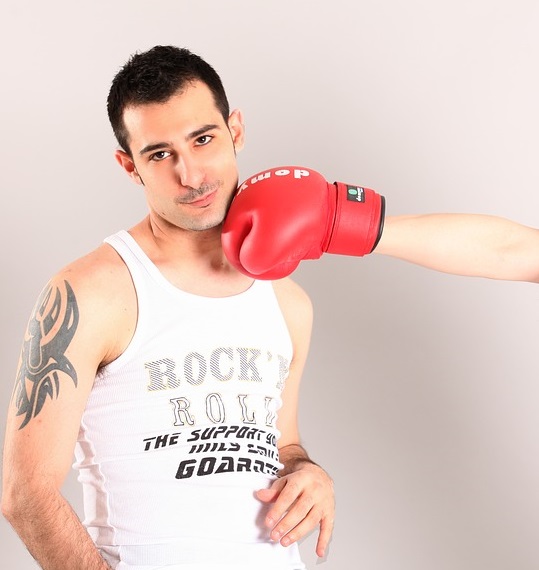Your first step in creating a brand is finding your corporate identity.
Are you laying the foundation for your business’ brand, or looking to rebrand and refresh it? Whatever step you are at in the branding process, these tricks and tips will help build a solid foundation for your business.
Any branding a business produces should support and be in line with the “big picture,” or the overall plan and end goals. Elements of branding include colours, fonts, the business’ voice, activity on social media and so much more.
Defining Corporate Identity & Branding
The first step in positioning your company for success is finding your corporate identity. Consider these questions to understand the foundation of your brand:
- Where does your company sit within the market? Hubspot recommends the SWOT analysis – look at your Strengths, Weaknesses, Opportunities and Threats.
- What’s your company’s vision? Create a one sentence statement that encapsulates your business’ value, distinctiveness and future.
- What’s your company’s mission? This should be straightforward and clearly explain your business’ purpose.
- What essence, or intangible emotion, do you want people to feel when they think about your business? Think of words like “safe,” “luxurious” and “inspirational.” According to AMP Agency, a brand’s essence should focus on one or two words, be unique and delivered consistently.
Now you can decide you brand positioning. Keep your identity front of mind, especially when designing your website, social media accounts and content, business documents and other marketing collateral. Incorporating your identity into every facet of your organization will keep your branding consistent and easy to detect.
Branding Your Business with Colours
The colour(s) you choose as part of your branding goes further than just logos. Neil Patel encourages business owners to think about colour when you are:
- Designing your website
- Building a mobile app
- Sending an email
- Creating a marketing campaign
And more!
It’s important you remember your customer. Although you may feel your business

Different colours can influence different moods, so ensure your colour scheme represents your brand.
should go in the same direction as big brands and choose common colours like black, red or blue, consider your audience. Is your demographic mostly female, so you want to market with pink? Think again. It turns out women actually respond to blue the most.
Read through the entire colour wheel, and how the psychology of a consumer’s brain react to them, with information on Businessing Mag and Quick Sprout. Here’s a helpful summary to get you started picking colours for your company’s branding.
Blue: Did you know blue is universally most people’s favourite colour? Among age ranges, genders and other demographics, blue is regarded as the favourite. Blue primarily conveys dependability and strength, but can also represent calmness and security. Lighter shades of blue are recommended for the friendlier and calmer brands, while darker shades are the right pick for corporations and security businesses.
- Think of Dell, Intel, IBM and Facebook.
Red: Red represents a variety of emotions: danger, love, urgency, youthfulness, etc. Red is also considered an impulse colour, and is a great colour to target impulse buyers, as the colour red quickens the customer’s heartbeat. Businesses in the food or romance industries should consider branding with red, and all business should consider it for discounting prices or advertising sales.
- Think of Nintendo, Target, McDonalds, CNN, Coca-Cola and clearance stickers.
Green: Green is symbolic of peace, health, growth, life and harmony. Green can also represent nature, the environment and something new. This is a perfect colour for businesses selling health or environmentally-friendly products and service
Choose complementary colors and two or three colors that represent your brand.
Think of companies like Animal Planet, Whole Foods and John Deere.
- It is important to stress cultural differences when designing logos and brand images. For instance, while green symbolizes life in Japan, it also symbolizes death in South America.
Yellow: Yellow can mean joy, happiness and warmth. It is a cheerful color, but should be used sparingly. It is, however, regarded as one of the colors least likely to be used in marketing, and is universally unpopular. While this color does not work well by itself, it is an excellent choice for an accent color.
- Companies that incorporate yellow well include Nikon, Best Buy and Shell.
Purple: Purple is one of the highest rated colors among women, and is most commonly associated with royalty. It is a color symbolizing nobility, romance, luxury and glamour. Purple would be a suitable color for spa, beauty and high-end products and services.
- Think of Hallmark, Cadbury, University of Washington and New York University.
Pink: Pink primarily represents femininity, encompassing love, sexuality, nurture and warmth. If your brand focuses almost entirely on a female audience, you may want to consider pink – depending on your products and the emotions you’re trying to convey.
- Brands using pink include Victoria’s Secret, Barbie and Curvy Girl.
Black and White: While opposites, both colors can represent sophistication, luxury and expensive. A balance of these colors, with an optional accent of grey, would work well for tech industries, or even businesses in the food industry.
- Think of Apple, Wikipedia and The New York Times.
So many colors to choose from! And you’re likely to choose more than one, so really try to capture the essence of your company in the color palette you choose for your branding. For example, if you are a business offering organic bath and spa products, think of using lighter shades of green, blue and white. Or, if your business sells security equipment, a mix of darker blues with elements of black would give your brand that extra oomph.
Branding Your Business with Fonts
Times New Roman or Georgia? Courier or Courier New? Bold or italics? Even if you can’t distinguish between fonts, you should know the value of them. Don’t feel overwhelmed in the sea of hundreds of fonts, check out these 3 Tips for Choosing a Font:
- Determine Your Tone: The font you choose for your business adds to the tone of your message and branding. Decide the mood for your business and branch off from there. If you’re looking for something more serious, choose a serif font; for fun or playful brands, choose a script or decorative typeface.
- Be Clear: To ensure effective communication with your audience, choose a font

It’s important to choose a font that embodies the personality of your brand.
and size that is clear and easy to read.
- Be Consistent: Once a font is chosen, stay consistent across all communication platforms. This includes your website, marketing materials, newsletters, etc. By staying consistent, you brand will become more recognizable to your audience.
Now it’s time to wade through some of the options!
Serif: Lines are attached to the letters, or they have “feet.” These fonts are traditional, and convey a more serious tone. It’s
Choose fonts like Georgia, Times New Roman and Baskerville.
Sans-Serif: Meaning “without serif,” these fonts don’t have the extra lines or “feet” as their Serif counterparts.
Choose fonts like Helvetica, Century Gothic and Calibri.
Script: Script fonts encompass all fonts that are stylized with cursive, or handwritten fonts, and the letters generally connect. These fonts are perfect for conveying many different tones ranging from fun and creative to more serious and elegant.
Look at fonts like Brush Script, Bradley Hand and Freestyle Script.
Display: Also known as decorative fonts, these should be used sparingly. More unusual than practical, these fonts are used for grabbing a reader’s attention.
Think of fonts like Bauhaus, Broadway and Chiller.
Establishing Voice in Your Business’ Branding

Now that your fonts and colors are chosen, what about your brand’s voice? The voice you write in — whether it’s for blog posts, social media updates, or press pitches –should consistently convey and support your brand. Think of the personality you want to convey, and use language to support that! Your voice should be a natural reflection off your branding, and should not seemed forced. Practice writing in your company’s voice often.
Put Branding Into Action with Social Media
Social media offers multiple platforms to advertise your brand, and opens the gates for the millions of users waiting to interact with your business; it is the best place to get your branding out there. It seems with every year, a new social media platform gains crazy popularity. So, which one is best for your business? Social Media Week breaks it down:
- Facebook: The company reported that the site has 2.01 billion monthly as of June 30, 2017. That’s more than one-quarter of the population! This site is utilized by all demographics, and is a must for any business. Think about posting fun, interactive and shareable content to this social media site. To increase brand awareness, take advantage of Facebook’s algorithm.
- Twitter: Twitter is no longer the second-most used platform, but with over 300 million monthly users, it is a site that should not be ignored. The most powerful tool for raising awareness is hashtags, use them strategically! Visual content is also important, as well as engaging posts like questions or polls.
- Instagram: With posts including only photos or videos, Instagram is very different among social media platforms, and is widely used by the millennial demographics. Create visually appealing content in line with your branding, while attaching 30 hashtags to it, and it will be seen!
The foundation of a business’ marketing and public relations efforts is branding. Once your mission is determined, every branding choice will add and contribute to spreading your message and mission. By having an updated, and consistent brand, your audience will remember your business and the subtle emotions conveyed through it when making purchasing decisions.
Read more at https://www.business2community.com/branding/build-brand-success-01992979
































